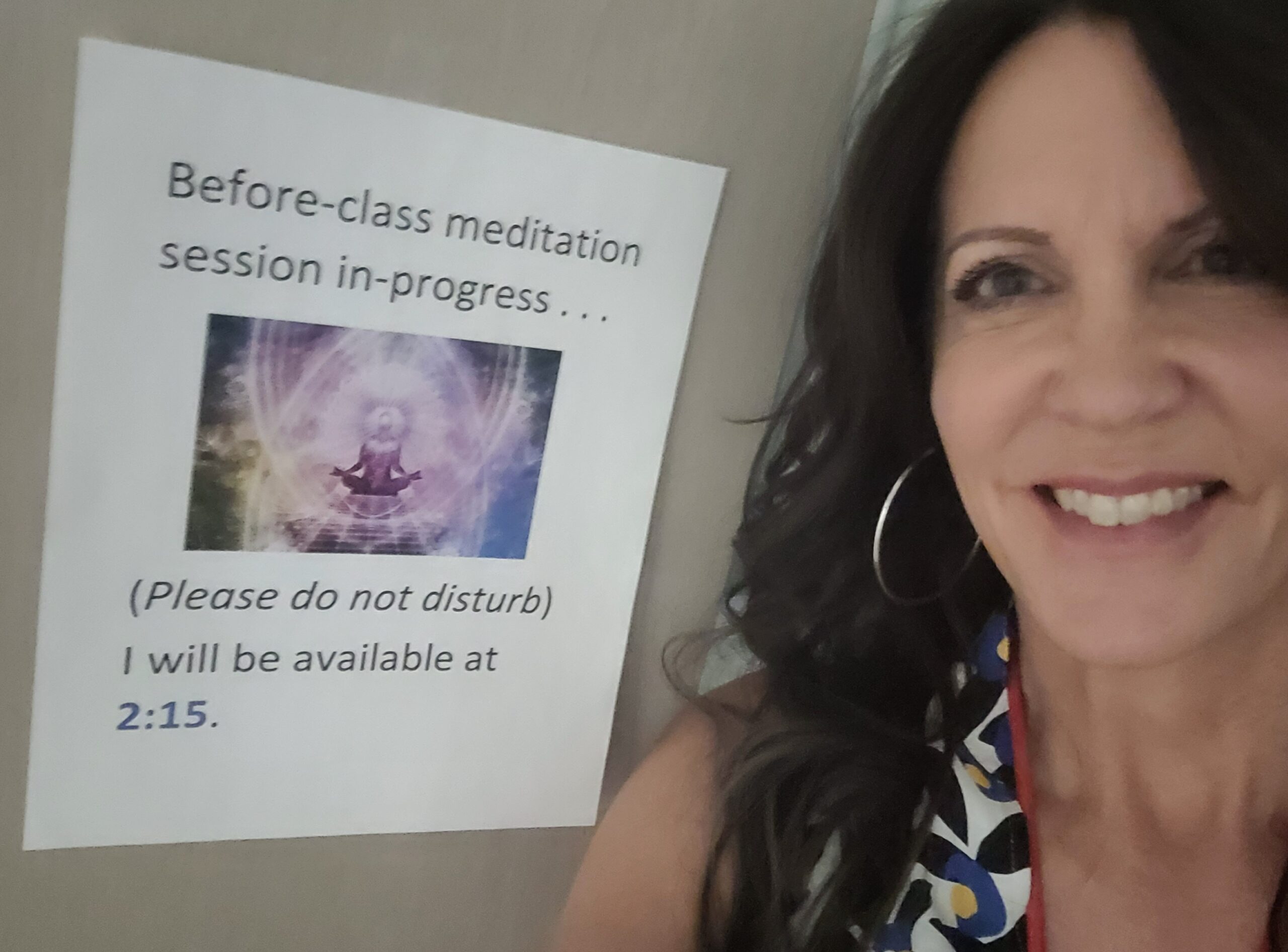I wake up to the first morning light, my brain recently bathed in glorious REM sleep. The restorative powers of sleep are legion: memory consolidation, increased problem-solving abilities, boosted immune functioning to name a few. There is evidence the brain performs a sort of housecleaning during shut-eye, making morning a ripe time for starting out the day with renewed clarity and potential.
So what do I do? Before my feet hit the floor, I grab my cell phone off the bedside table and let the fresh horrors of the overnight world infiltrate my blissfully open mind.
I tell myself that I am checking my phone because I have children. (But they are in their early 30’s, y’all.) Then, I see a red flag indicating I have e-mail, and without thinking I click to open it. And, while I’m here, I might as well check Facebook . . .
I know none of this is good. First, any student who e-mails me overnight is not writing to say what a wonderful teacher I am. Instead, it’s that there’s been a death in the family or they just plain forgot they had an assignment due at 11:59pm. And don’t get me started on how scrolling social media can affect mood.
I noticed a tendency to feel tethered to tech when I started teaching online full-time about five years ago. I had a gnawing sense that I needed to be able to respond to students at all hours of the day (and night). I thought that since I wasn’t actually teaching in-person, the tradeoff was making myself widely available to students.
So, I found myself reaching for my phone at stoplights, while I waited for my coffee, pretty much any time my brain was idle for a minute. Heaven forbid I should be left alone with my thoughts.
What I found, however, is that I was feeling exhausted all the time as an online teacher. I felt overwhelmed and a tad resentful. It seemed like I could never “catch up.” I know I’m not alone in this. Many teachers feel like their workdays never end, and that is because they don’t. Tech has a frightening way of blurring day into night, weekdays into weekends, our 40s into our 50s . . .
Over time I have discovered that most of the angst in my life can be traced to boundaries. According to Nedra Glover Tawwab, author of Set Boundaries, Find Peace, the definition of boundaries is, “expectations and needs that help you feel safe and comfortable in your relationships.” Thus, a tech boundary is one set for your relationship with yourself.
Okay, so just set a tech boundary. I’ll just tell myself I won’t pick up my phone at the slightest hint of ennui. Easy, right?
Not so fast. What makes this a struggle is we battle our brain’s reward system when we fight tech. The little red dot with a number on it is anything but innocuous; it is there to prompt us to lay eyes on the alert. Tech shapes our behavior by hijacking the reward system.
So what’s the reward associated with opening overnight e-mail? It actually might be the positive rush of seeing that there is, to quote my cop-husband, “nothing to see here” – that good feeling of realizing there are no fires to extinguish.
In her book Good Habits, Bad Habits, author Wendy Wood writes about creating “friction” around behaviors we want to discourage. In this way, we interrupt habits that are deeply grooved in our neural pathways. Here are some ideas I’m working on for putting friction between me and tech:
- Remove work e-mail from my phone and home devices. This works as long as I don’t circumvent by logging into e-mail using my phone’s browser.
- Alternatively, remove e-mail notifications from all devices. Can’t quite remove e-mail from your phone altogether? Disable the notifications that keep us coming back.
- Designate three periods a day for checking e-mail. I am more successful with this on some days than others. But, I find I am more focused when I am not trying to multi-task.
- Put my phone where it can’t be accessed quickly. I’m not as likely to grab my phone at every stop light if it isn’t right there on the console. At the grocery store, I can put my phone at the bottom of my bag.
The other day, while waiting for coffee at my local shop, I instantly reached for my phone and thought better of it. Even if there is an e-mail I need to respond to, must I do it right now? Instead, I immersed myself in the artwork on the walls and felt a better kind of rush.
Up next week – musings on setting time boundaries as a teacher.
The post Teaching Boundaries, Part I – Tech appeared first on My Love of Learning.








